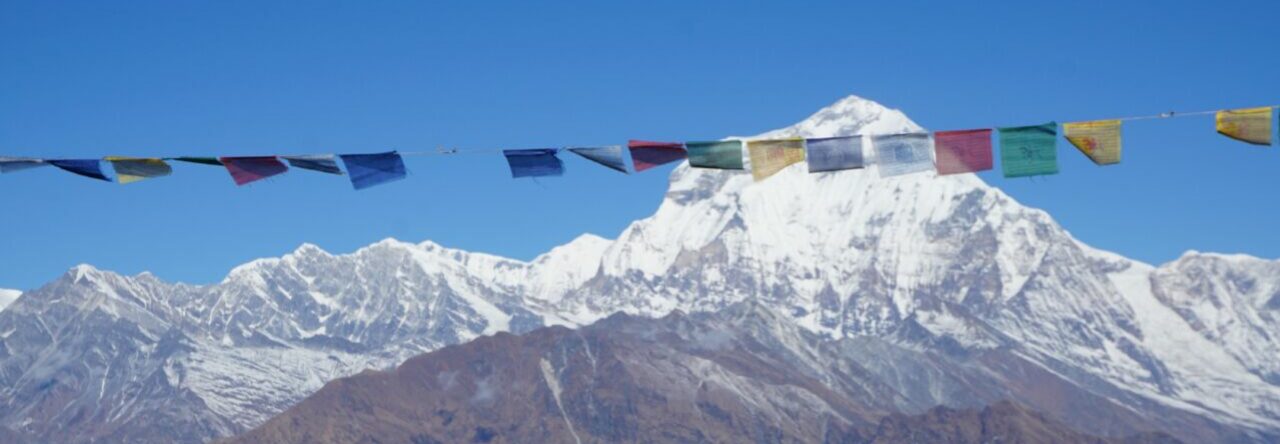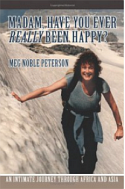It’s been exactly two weeks since my beloved Dawa greeted me at breakfast
in the Goba Guest House with a pale yellow kata and a farewell
breakfast–with Grandma and the whole family in attendance. I was sad to
leave after six glorious weeks, but eager to have at least a glimpse of
exotic Kashmir, a place that has eluded me twice. I had been warned
about the pressure exerted by Kashmiri tradespeople, and the vast
difference between the Ladakhi and Kashmiri psyche and modus operandi,
and I found this true, starting with the wild jeep ride in the Karakoram
Mountains over the Zoji La (pass), the most dangerous of all passes so
far. I know–I say that every time, but this time was so perilous that I
promised God total fidelity for the rest of my life. Good works, you
name it, I’m your humble servant!
This was not the jeep I had been promised, but one driven by a cowboy
who picked up six other men, among them two Kashmiri policemen working
in Leh. One looked like Omar Sharif and the other like John Travolta. An
interesting pair. I was crushed in one corner by one of the amorous
policemen, who was intent on “making me REALLY happy” (It never changes
in India!), and in my attempt to get away, I could see down every abyss
and yawning thousand-foot chasm as the jeep bumped and twisted over
roads, some of which were little more than stream beds. And, as with so
many roads I traveled, they were “under construction” (for the
foreseeable future). At 3 AM the driver, having had a few drinks when we
stopped for rice and dal, nearly hit a rock wall (better than going over
the cliff, I figured), and decided it would be better to transfer the
driving job to a sleeping comrade in the back. He, too, had imbibed, but
at least gotten some sleep. Add to this the blaring of Hindi music at
high decibels for 15 hours and you have a new definition of living hell!
At 9 AM, when I reached the Green Valley House Boats on Lake Nageen in
Srinagar, I fell onto a bed and didn’t awaken until mid-afternoon.
Srinagar is famous for elaborate houseboats fitted with front porches
adorned with carved latticework, dining rooms carpeted in orientals, and
brocaded couches and chairs for lounging. I sat on the front porch
facing the mountains. Their image was silhouetted in the calm lake as
were the many other houseboats lining the shore. Colorful shikaras
(boats with canopies and four comfortable seats for the tourists)
floated by, paddled by a skinny man wielding a heart-shaped paddle. Many
other boats stopped, hoping to sell their wares by walking up a ladder
and displaying them in front of me on the porch. I declined and just
watched the passing parade–the kingfishers perched on water lilies, and
the pigeons, hawks, and eagles circling. How I cherished the peace and
quiet after the previous night’s ride.
My host, Maqsood Madarie, very graciously took me to his home for dinner
to meet his extended family. I bonded with his charming 15-year-old son,
Aamir, who asked me many questions about my religion and what I knew
about his Muslim faith. We discussed the status of women (burkhas, which
his mother wore), and politics in the U.S. I was amazed at his knowledge
of our government and his understanding of world politics. I found this
true of the young children I talked with over the next few days. I was
also in awe of the number of languages and courses they studied in
school. They were eager, of course, to practice English with me and
spoke better than their parents.
Driving in Srinagar is like being in the center of a whirling dervish!
As in Ladakh, no seatbelts are used, and there are no traffic lights.
Whoever is the boldest gets to enter a traffic circle (roundabout)
first. Near misses are the name of the game–and a game it is! Nobody
worries about passing on curves and is deft at swerving to miss cows and
garbage and pedestrians. There simply doesn’t seem to be a concept of
right-of-way. Add to this the fact that every other driver is talking on
a cell phone, and you have a recipe for disaster. I’ll never complain
about Delhi, again!
On my marathon flight home, which started early in the morning from
Srinagar, with the most thorough examination of luggage and person I’ve
ever endured, and included a twelve-hour wait in the Delhi airport, I
found myself, once again, drawn to the children of all ages that were
probably as curious about me as I was about them. And I noted how
patient they were during those long waits. They asked all kinds of
questions from “What is your favorite team (football/soccer)?” to “Do
you like Beckham? He’s in the U.S. now” to “Do they teach Japanese in
your schools?” and “Are you glad that George Bush will be gone next
year?” You can cover a lot of territory in twelve hours and I was ready
to sleep by the time we took off at 12:15 AM.
Of all the wonderful experiences I had in Ladakh, one of the most
poignant was a gift I received from the two young men at the internet
cafe in Leh. They bought me a foot-tall carved image of one of the eight
auspicious Buddhist symbols, mounted on a stand and all nicely wrapped
in lavender paper. On the back they had written: to Mrs. Meg Noble
Peterson of the United States for the remembrance of summer 2008 in
Ladakh, from Stanzin Rabgyas and Lobzang Otzer of the Get Connected
Cyber Cafe in Leh, Ladakh. We pray for your health.
I hope before long to have some photos mounted on Facebook of these
friends and others I was so fortunate to meet during my seven-week
sojourn. But that won’t be before September, after my three weeks here
in New Hampshire, my big birthday bash with my children, cousins and
assorted relatives, and my visit to Seattle, Whidbey Island, and the
Assiniboine Mountains of British Columbia. I’ll close this chapter by
urging you to visit this lovely area of India, and when you arrive, pick
up the excellent brochure at the airport entitled Mindful Travel in
Ladakh. It’s put out by the International Society for Ecology and
Culture, part of The Ladakh Project I mentioned earlier. It will give
visitors valuable information to help them understand Ladakhi traditions
and common etiquette, and avoid misunderstandings by increasing cultural
sensitivity.


Trees
Oh dear Meg, did I tell you how I love to read your stories?? I enjoyed!!
Soon I will send you a mail, I have been so busy and a lot happened.
Love you, hug, Trees